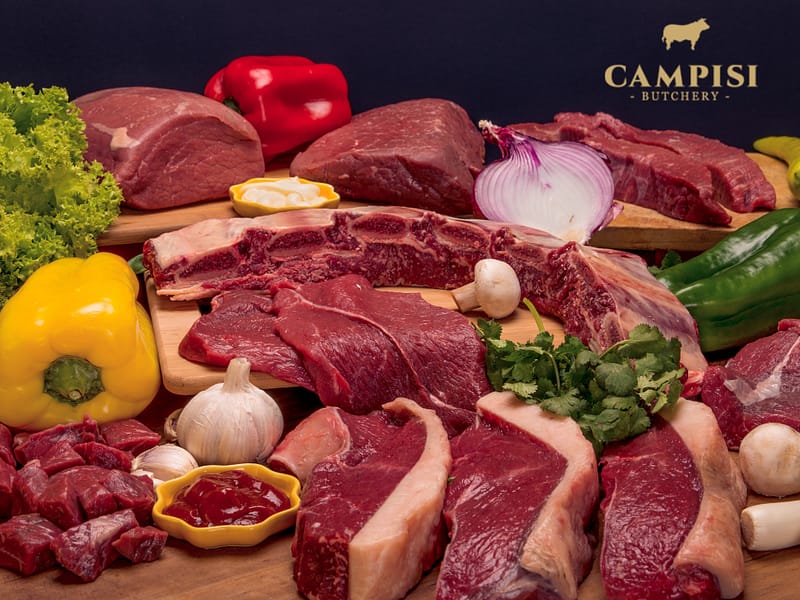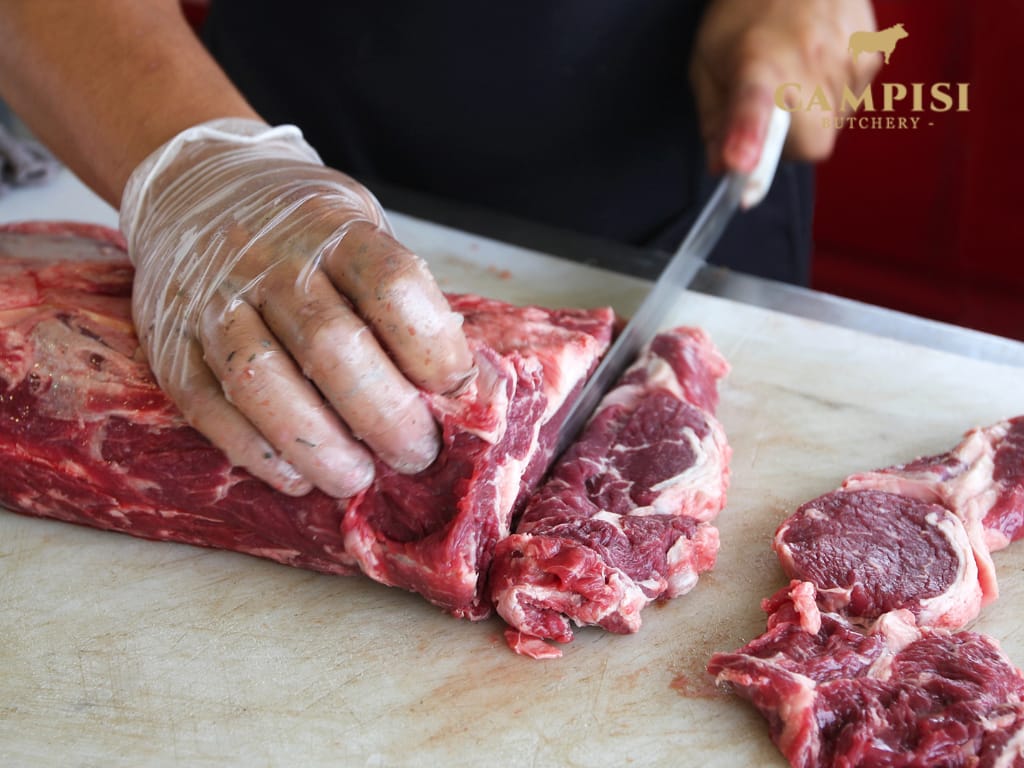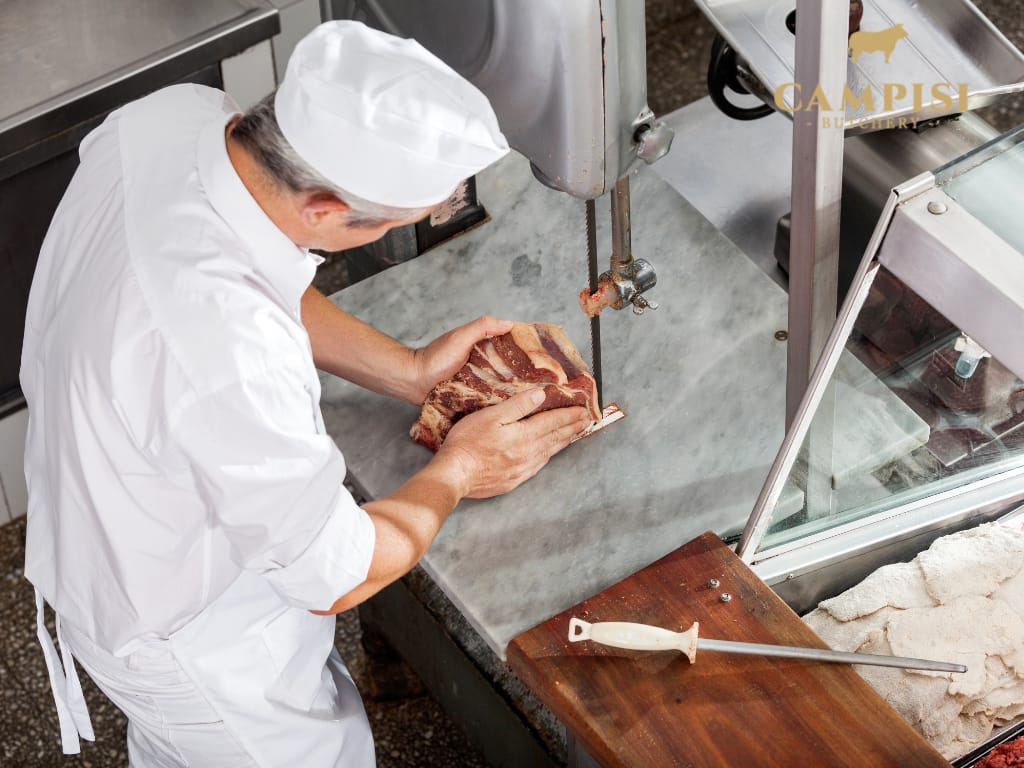The culinary world is witnessing a significant shift towards organic produce, with organic meat emerging as a particularly sought-after commodity. This surge in popularity stems from a growing consumer awareness about health, environment, and animal welfare. In butchery, organic meat refers to meat products obtained from animals raised in specific conditions – fed organic feed, not treated with synthetic hormones or antibiotics, and given access to outdoor spaces. Understanding what sets organic meat apart is crucial for both butchers and consumers in this evolving market.
Characteristics of Organic Meat
Differences in Texture, Taste, and Quality
Organic meat often showcases notable differences from its conventional counterpart. Due to the natural diet and humane raising practices of the animals, organic meat tends to have a more pronounced flavor profile. The texture can be slightly different as well – it’s often found to be firmer, owing to the traditional grazing and physical activity of the animals. The quality of organic meat is also perceived to be higher, not just in taste but also in terms of meat color and consistency.
Nutritional Benefits of Organic Meat Cuts
Health-conscious consumers are increasingly turning to organic cuts of meat for their nutritional benefits. Organic meats are often leaner and contain a higher concentration of essential nutrients like omega-3 fatty acids, vitamins, and minerals. The absence of harmful antibiotics and growth hormones in organic meat also contributes to its appeal for a healthier lifestyle.
Sourcing and Certifying Organic Meat
Challenges in Sourcing Organic Meat
Sourcing authentic organic meat presents unique challenges. The primary issue lies in finding reliable suppliers who adhere to the strict standards required for organic certification. Additionally, the supply of organic meat can be limited or inconsistent, affected by factors like seasonal changes and the slower growth rate of organically raised animals.
Certification Process for Organic Meat
The certification process for organic meat is rigorous and comprehensive, ensuring that all standards of organic farming and animal welfare are met. This process involves regular inspections of farming practices, verification of organic feed, and adherence to animal health and welfare standards. The certification not only serves as a guarantee of quality for consumers but also plays a vital role in maintaining the integrity of organic meat in the market.
Butchery Techniques for Organic Meat
Special Considerations in Cutting Organic Meat
Butchering organic meat requires a mindful approach that respects the quality of the product. Special considerations include:
- Gentle Handling: Organic meat, often being leaner, requires gentle handling to prevent damage to the muscle fibers.
- Traditional Butchery Techniques: Utilizing traditional, hand-cutting techniques can be more effective with organic meats to preserve their integrity.
- Temperature Control: Maintaining optimal temperatures during butchery is crucial to prevent bacterial growth and preserve freshness.
Preserving the Integrity of Organic Meat During Butchery
Preserving the integrity of organic meat is paramount in the butchery process. This involves:
- Minimal Processing: Keeping processing to a minimum to maintain the natural quality of the meat.
- Hygiene and Cleanliness: Ensuring high standards of cleanliness to avoid contamination.
- Respect for the Product: Understanding the value of organic meat and treating it with the respect it deserves, aligning with the ethos of organic farming.
Preparing Organic Meat Cuts for Cooking
Best Practices in Preparing Organic Meat Cuts
Preparing organic meat for cooking involves techniques that highlight its natural flavors and textures:
- Adequate Resting: Allowing the meat to rest post-butchery ensures tenderness.
- Mindful Seasoning: Using seasonings that complement rather than overpower the natural taste of the meat.
- Pre-cooking Preparation: Bringing the meat to room temperature before cooking for even heat distribution.
Recommended Cooking Techniques for Organic Cuts
Certain cooking techniques are particularly suited to organic meats:
- Low and Slow Cooking: Ideal for tougher cuts, enhancing flavor and tenderness.
- Moist Heat Methods: Techniques like braising or stewing can be beneficial for retaining moisture in leaner organic meats.
- Grilling and Roasting: Perfect for premium cuts, highlighting the meat’s natural flavor.
Marketing and Labeling of Organic Meat Cuts
Effective Marketing Strategies for Organic Meat
Marketing organic meat effectively requires strategies that emphasize its unique qualities:
- Highlighting Health Benefits: Focusing on the health and nutritional advantages of organic meat.
- Storytelling: Sharing the story of the meat’s origin, how it was raised and processed.
- Visual Appeal: Effective presentation in retail settings to attract consumers.
Labeling Requirements and Consumer Education
Understanding and adhering to labeling requirements is crucial:
- Compliance with Standards: Ensuring labels meet legal standards for organic certification.
- Educational Information: Providing customers with information about the benefits and characteristics of organic meat, aiding informed choices.
Trends and Future Outlook in Organic Meat Butchery
Emerging Trends in Organic Meat Consumption
The organic meat industry is currently experiencing several significant trends driven by consumer preferences and a growing awareness of health and environmental issues. There is a noticeable shift towards ethically sourced and sustainably farmed meats, with consumers increasingly seeking transparency about the origins of their food. Another trend is the rising popularity of grass-fed and free-range organic meats, as consumers become more aware of animal welfare issues. Additionally, there’s an uptick in demand for lesser-known cuts of organic meat, driven by both culinary curiosity and a desire to reduce waste through nose-to-tail consumption.
Future Outlook for Organic Meat in the Butchery Industry
Looking ahead, the organic meat industry is poised for continued growth. This growth is likely to be fueled by ongoing concerns about health, the environment, and animal welfare. We may see more butchers and meat suppliers adopting organic practices to meet this demand. Innovations in organic meat processing and packaging, aimed at extending shelf life and reducing environmental impact, are also anticipated. Furthermore, as consumers become more informed, there’s a potential shift towards a more holistic approach in organic meat production, emphasizing not just the end product, but the entire lifecycle and wellbeing of the animals.
Conclusion
Understanding and implementing proper techniques in organic meat butchery is more critical than ever. As the demand for organic meat grows, butchers and meat industry professionals must adapt their practices to meet consumer expectations for quality, ethics, and sustainability. The future of the butchery industry will likely see a stronger integration of these values, reflecting the growing role of organic meat in influencing consumer choices and shaping food trends. The ongoing evolution in consumer preferences and the industry’s response will continue to define the organic meat market’s trajectory.







